Castle of the Immortal Highlanders
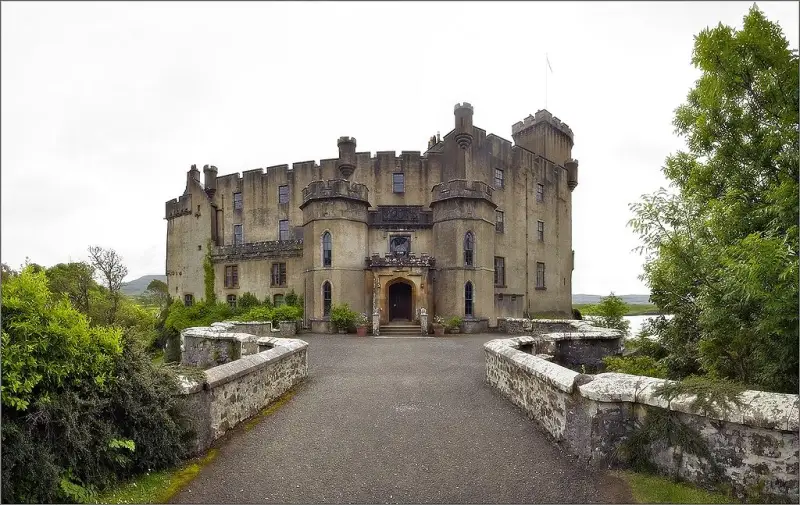
The main entrance to Dunvegan Castle. Photo by Gernot Keller
When the bread began to turn yellow.
Between Earli and Ergyle began
Not for life, but for death struggle.
The Duke of Montrose wrote a letter:
"Terrible Ergail, and don't wait an hour,
Speak in the morning and your people
Airlie Castle, plunder lead!”
"The beautiful castle of Airlie." Robert Burns
People and castles. In our previous material from the series “about castles” we talked about the Eltz family castle. And we will return to the story about this castle and continue it. However, today the topic of our story will be another “family castle”, which is located on the other side of Europe, in Scotland. This is Dunvegan Castle, which is located on the island of Cy in the Hebridean archipelago and which still belongs to the legendary clan MacLeod. Well, yes, those same “immortal” MacLeods who were talked about in the once popular TV series “Highlander”. And they are immortal because they can only die if their head is cut off, otherwise there is no other way. In one of the episodes, Connor and Duncan MacLeod use swords to cut down their same eternal enemies, but the most interesting thing is that Connor MacLeod is by no means an invention of the creators of the series, but a very real one. historical character. Moreover, the MacLeods still live in Dunvegan Castle, dating back to the 13th century. So in this sense, they can be considered immortal!
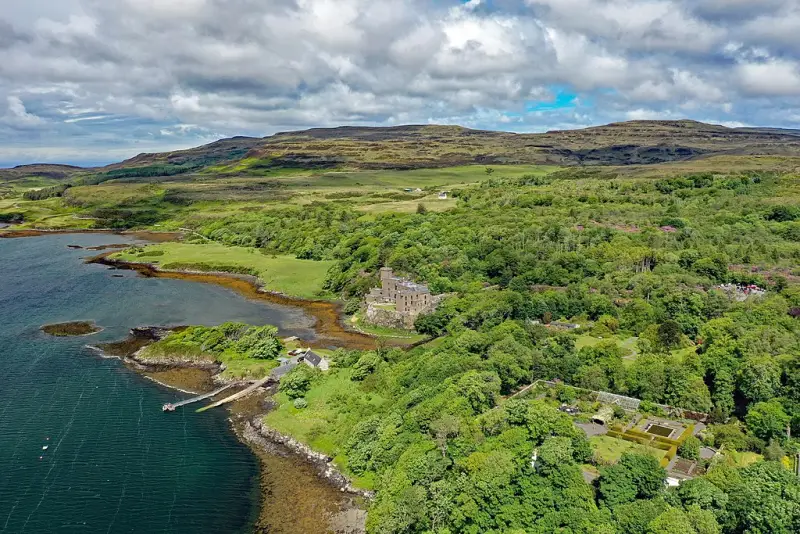
And this is what this castle looks like from a bird's eye view... Photo by Günter Czuch
According to legend, this castle was founded by the son of the King of the Islands, Olaf the Black, named Laud, and he also became the founder of the MacLeod family. The castle was built on an island, so it was not easy to get to. And it was possible to get into it only through the Sea Gate, which the owners of the castle fortified in a way that the entrance to any other royal castle in England and Europe was not fortified.
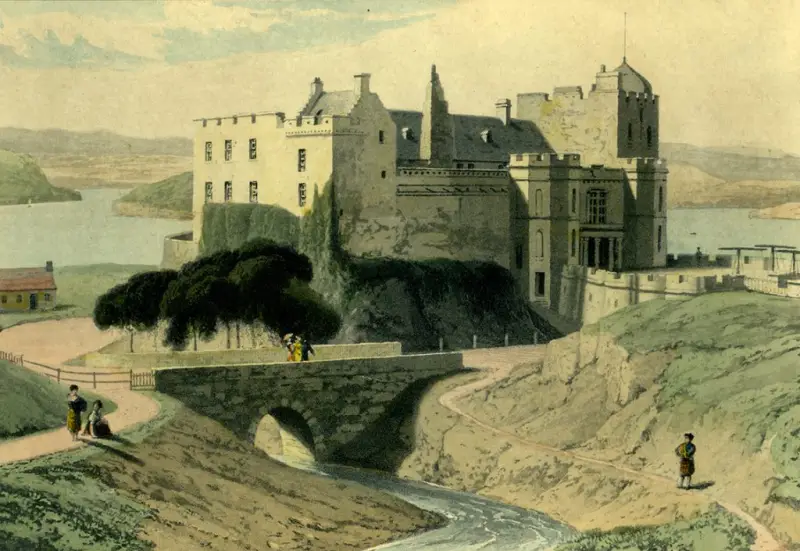
This is what the castle looked like in the 18th century... Dunvegan Castle archive
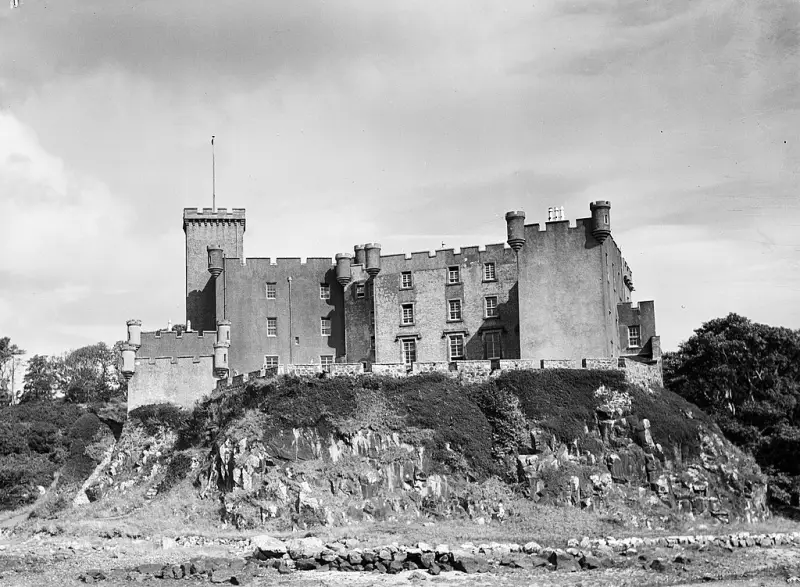
And this is how we see him in a photograph from 1934. Dunvegan Castle Archive
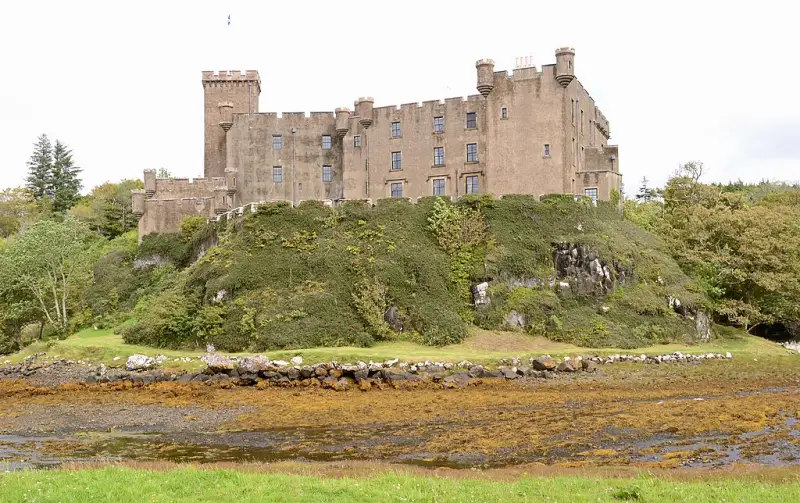
Well, this is how he appears before us today. Photography by Andrew Hackney
However, if you do not pay attention to the legend, then the whole story looks like this: first, after the death of his father in 1265, Laud inherited the Isles of Lewis and Harris, as well as the land holdings of Sleat, Trotternish, Waternish and Snizort on the Isle of Skye. But having married the daughter of the Norwegian seneschal Skye Macralda Armuial, he received the lands of Glenelg, Duirinish, Minginish, Bracadale, Lindale and... Dunvegan Castle, which has since been the home of the clan leader. When Leod died in 1290, his lands were divided between his two sons Siol Tormod and Siol Torquil, who formed two branches of the MacLeod family.
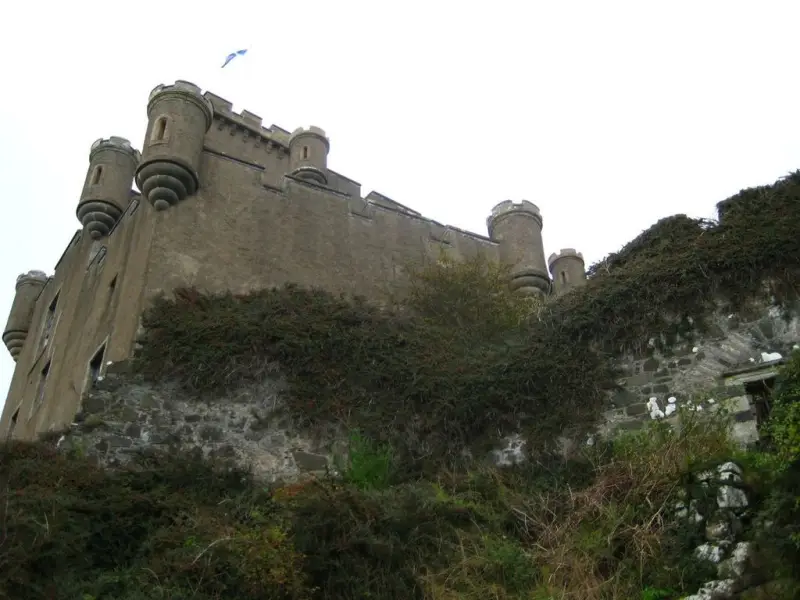
Up close, he looks even more impregnable than from afar. Photo by Carlos Menendez San Juan
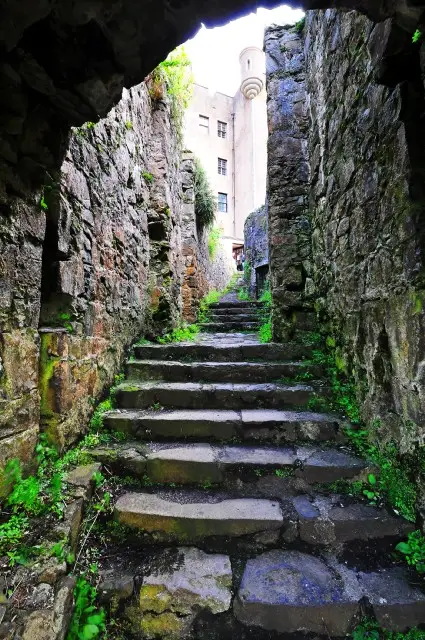
Everything here is permeated with antiquity, the steps of the stairs have been worn down by the feet of many generations of MacLeods! Photo by Michael Green
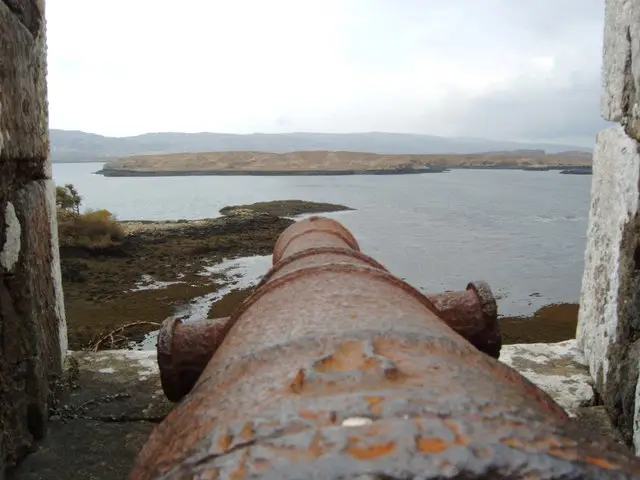
But the rusty cannons still look out over the bay... Photo by Darrin Antrobus
The construction of Dunvegan was intended to strengthen the clan's power on the Isle of Skye. Initially, the castle was a wall that went around the top of the rock, and a moat that blocked access to it from the land side. And only in 1350, the third leader of the Malcolm clan built a donjon tower in the north-eastern corner of the fortress. At the beginning of the 1623th century, the Fairy Tower was built to improve living conditions in the castle. In 1684, under Roderick MacLeod, a number of more residential premises were built, and between 1690 and XNUMX, several more residential premises were built in the southwestern part of the fortress, and the old donjon was abandoned. However, in that distant time, the castle was protected not only by high walls, but also by the water that surrounded it.
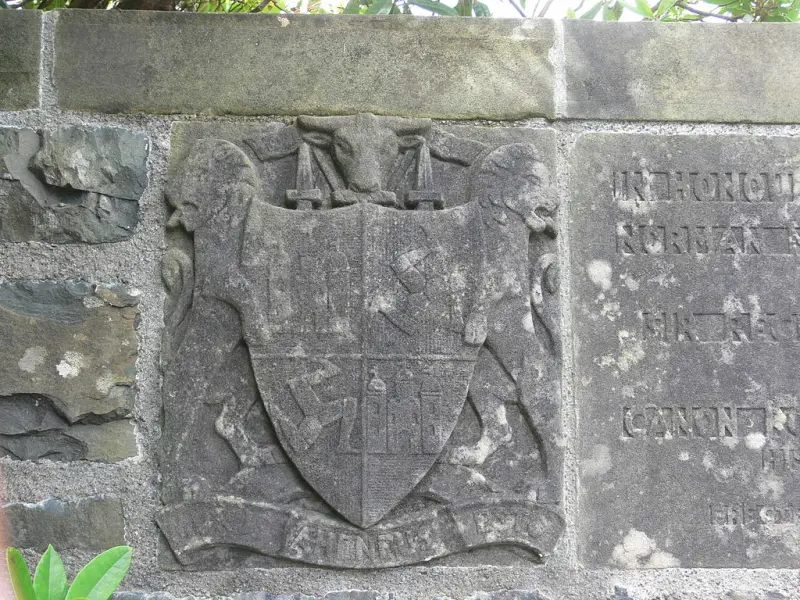
Coat of arms of Clan MacLeod. Photography by Remy Mathis
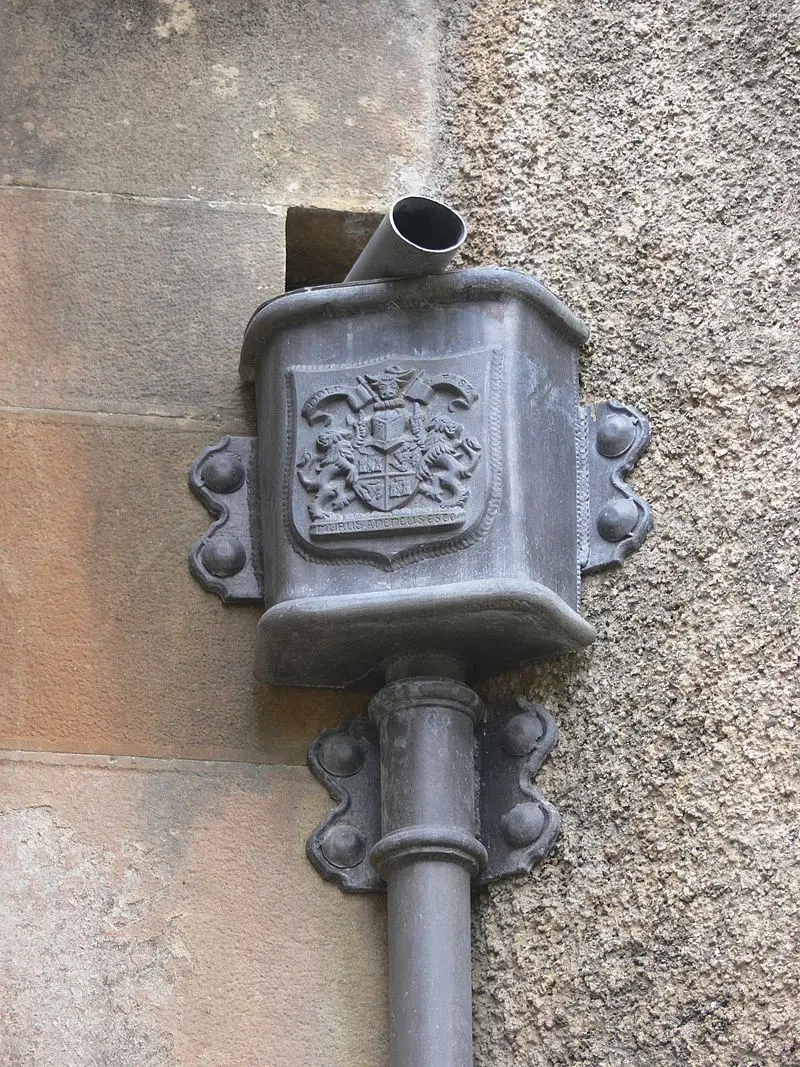
And this coat of arms is here at every step! Photography by Remy Mathis
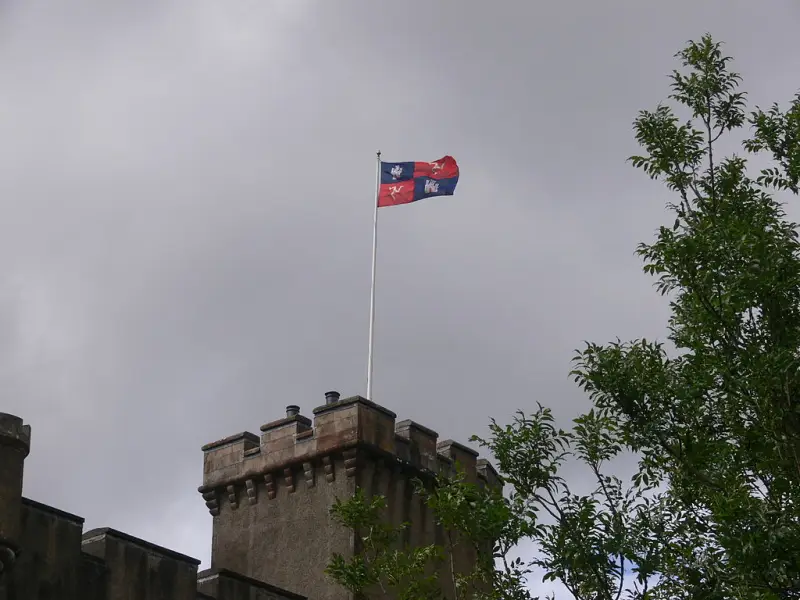
This coat of arms is also decorated with a flag that proudly flies over the main tower of the castle. Photography by Remy Mathis
There was a legend that the queen of Scottish fairies and elves gave Laud the magic fabric from which the banner was made, and promised that if in case of danger he raised it above the castle, then she would come to the aid of his clan three times. And here’s what’s interesting: according to the same legends, the MacLeods twice called upon the queen of fairies (or elves?!), so they still have one more opportunity to turn to her for help. And indeed, in all the centuries that this castle has existed, it has never been captured by an enemy. Although the MacLeod clan had more than enough enemies.
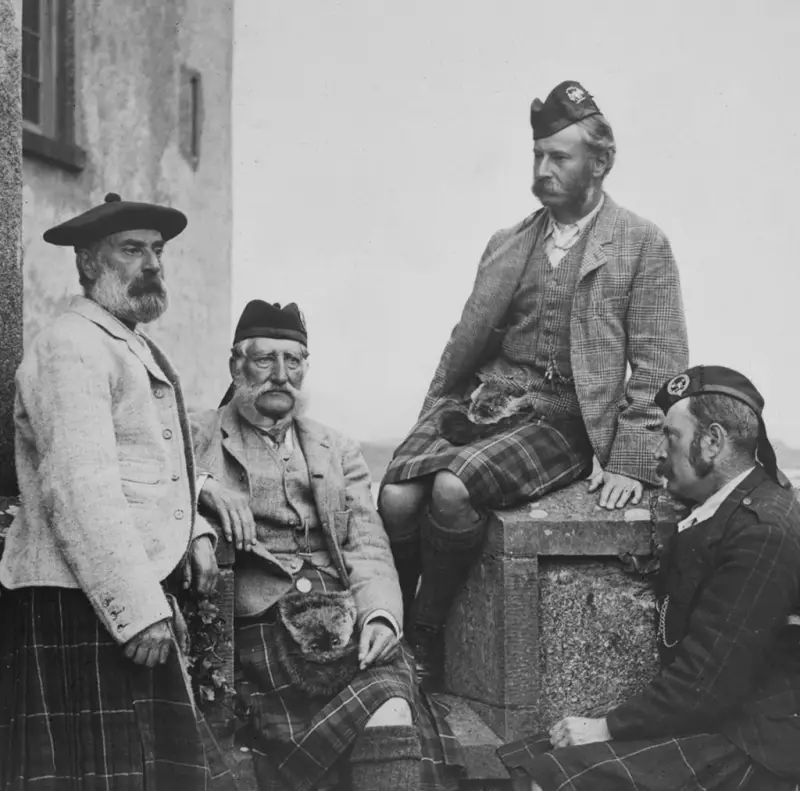
And this is what the clansmen looked like already in the era of photography. Photo from the archives of Dunvegan Castle
For example, the MacLeod clan was the sworn enemies of the MacLeods. And for 300 years they ripped open each other’s bellies and constantly quarreled over land. Even the kings tried to reconcile them, but no matter how hard they tried, nothing came of their efforts!
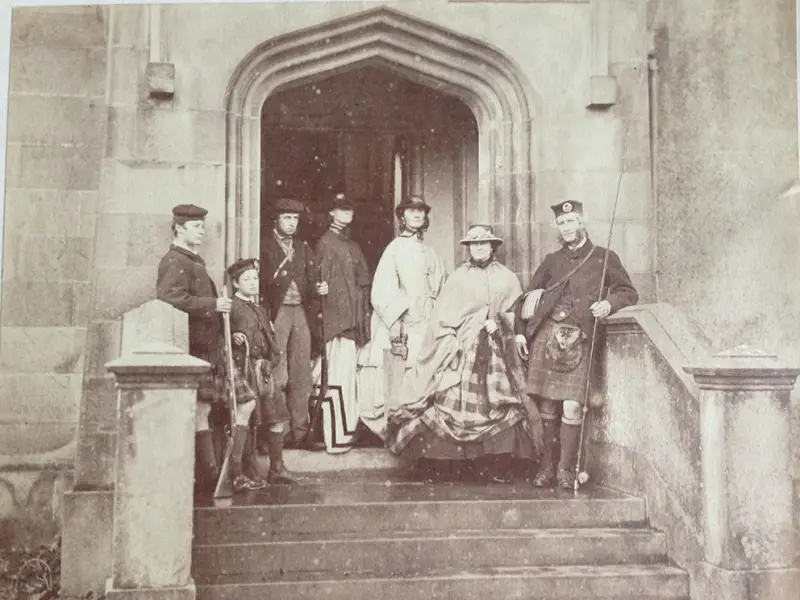
In the 19th century they hunted and fished. Dunvegan Castle Archives
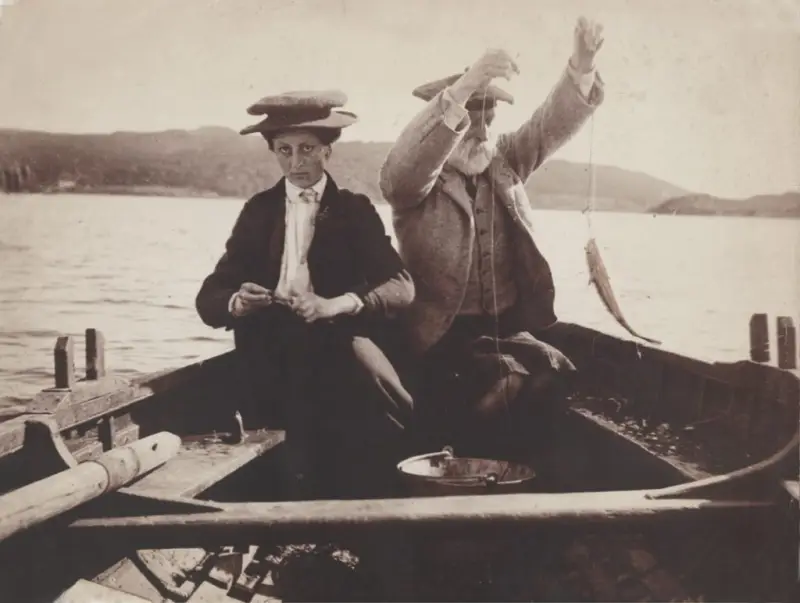
Later, when women's fashions became more democratic, women also helped men in fishing. Dunvegan Castle Archive
True, one day the clans decided to reconcile through marriage. Many people did this then, and there was nothing unusual about it, on the contrary. But the bride proposed by the MacLeod clan to the leader of the MacDonald clan was... one-eyed. Probably, they simply did not have another girl - a close relative. But the leader of the MacDonalds considered himself insulted and therefore sent her back, and they put the girl on a one-eyed horse, and to accompany her they gave her a one-eyed servant and a one-eyed dog! This is how they failed to reconcile.
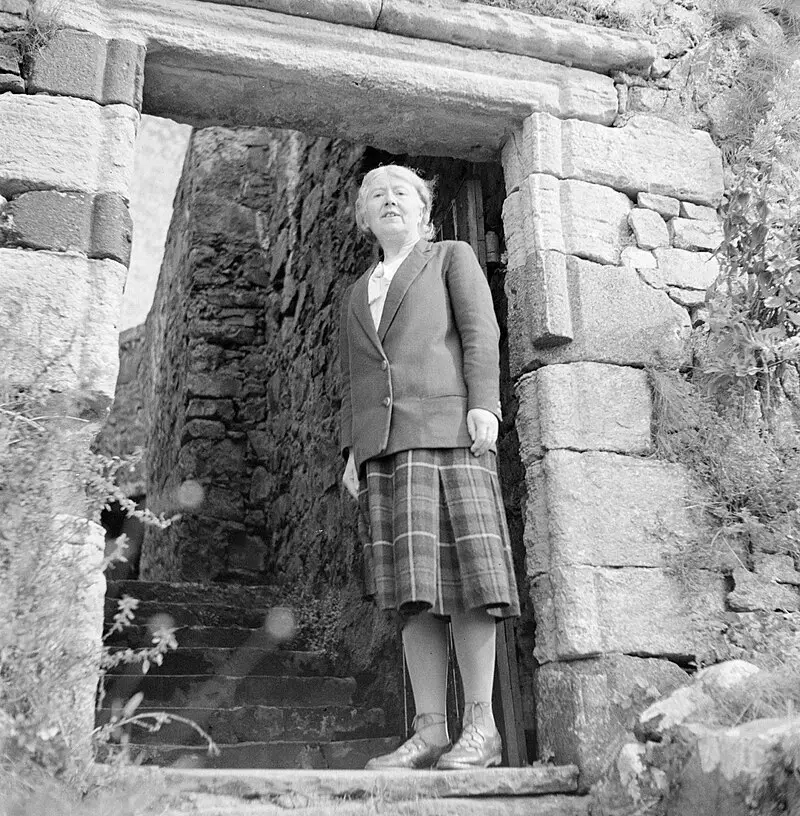
The famous Flora MacLeod of Dunvegan Castle. Photo 1934 National Photographic Archives
Over time, the castle lost its defensive purpose. And already in the middle of the 1790th century it was precisely a dwelling, albeit an ancient one, and nothing else. In 1840, its full-scale reconstruction began, led by the architect Walter Boak. The old donjon was restored and turned into a guest house. Another reconstruction of the castle was carried out in 1850-XNUMX, after which the castle inside became little different from the rich English houses of the same time.
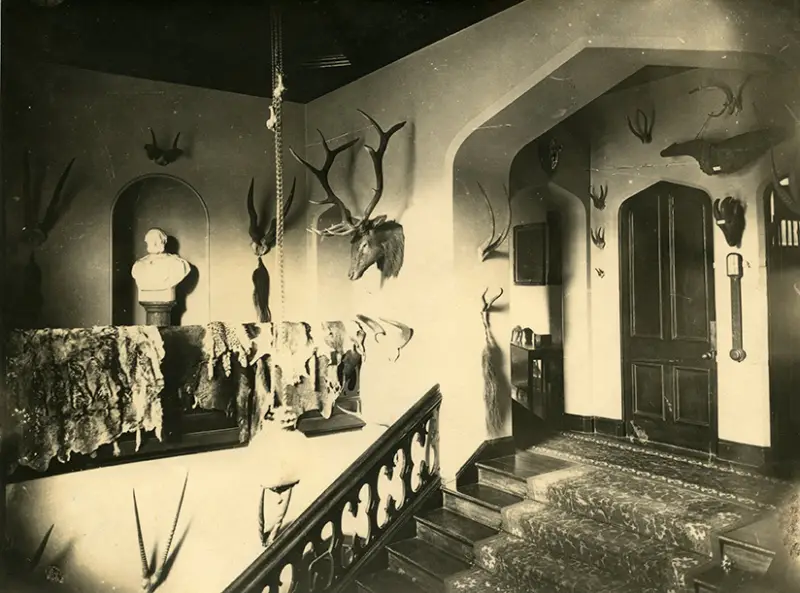
Inside the castle. Photography from the 30s. Dunvegan Castle Archive
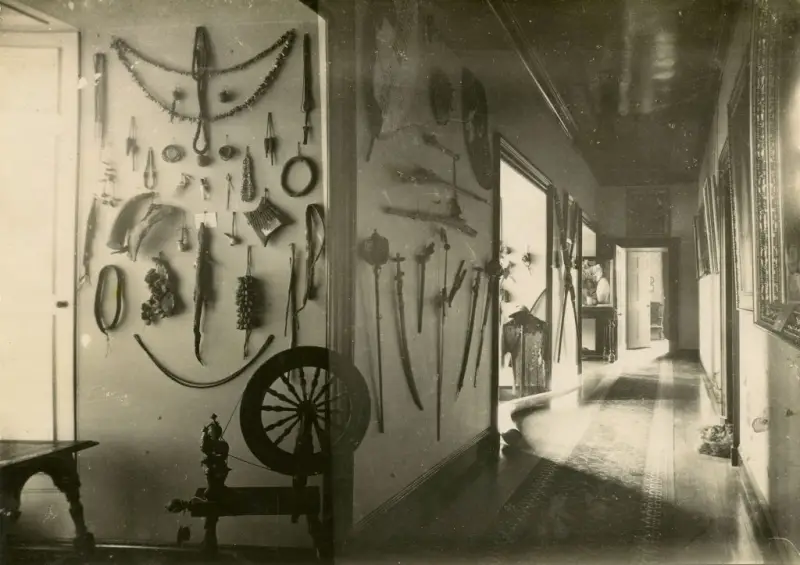
Dried crocodile and Indian sabers are on the walls, and near the wall is an old spinning wheel. This is how they lived in the last century... in the middle of a museum. Dunvegan Castle Archive
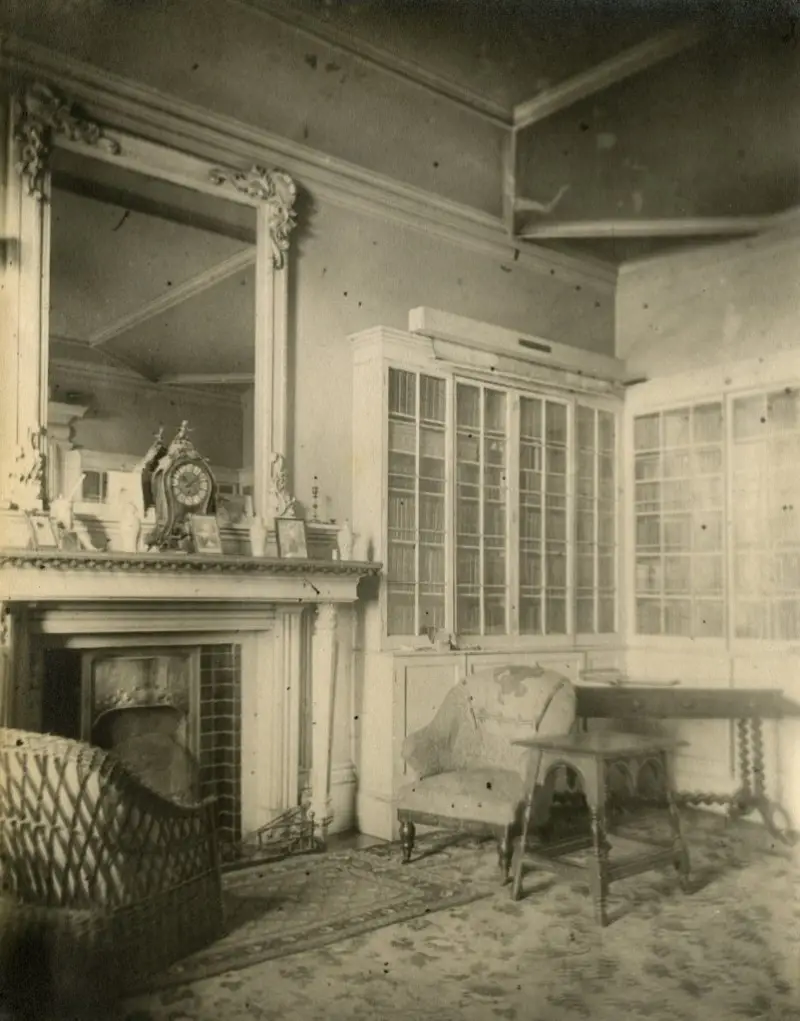
The decoration of the rooms is in typical Victorian style. Library. Dunvegan Castle Archive
And in the middle of the last century, Flora MacLeod came up with the idea of uniting the descendants of the clan scattered throughout the world. And despite all the difficulties, she succeeded, and in 1956 many MacLeods came to the family castle, where Queen Elizabeth II herself arrived. Since then, these clan meetings have been held regularly at Dunvegan Castle, and every four years clan members return from all over the world to celebrate their common ancestry here.
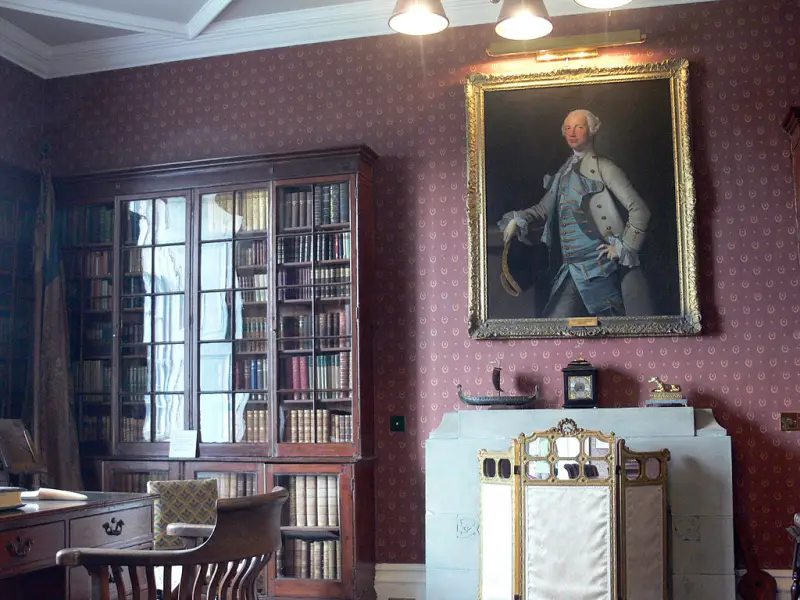
Today we can see these same rooms, although not all of them, in color photographs. Photography by Remy Mathis
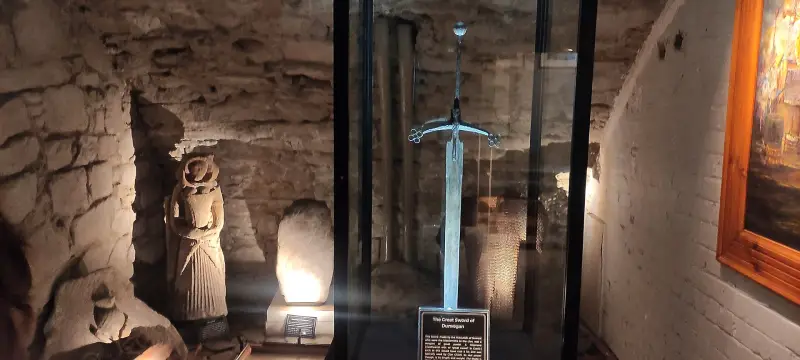
The Dunvegan Greatsword is a typical Scottish claymore. Photography by Nissan Cohen
Well, in the premises of the castle there is now also a museum, because maintaining such a “dwelling” and maintaining it in proper order costs a lot of money. Here you can see, for example, a completely unique “Donegan Cup” (some believe that this is the famous Grail), which was brought by one of the clan’s ancestors from the East. It is possible that it was because of him that there was talk about the immortality of the MacLeods, because according to legend, the one who drank from the Holy Grail became immortal. And there are grounds for such a judgment. After all, the “Donegan Cup” is basically nothing more than a simple wooden cup, but for some reason it was decorated with gold, silver, and precious stones. Why would this rude piece of wood be such an honor? True, in the MacLeod archive there is a record that this cup was a gift from the O’Neill clan for assistance in the fight against the British. But again, why give them such a strange gift, it’s something akin to... the one-eyed bride, but for some reason it was received in a completely different way! But there is no information about where the O’Neills got this cup.
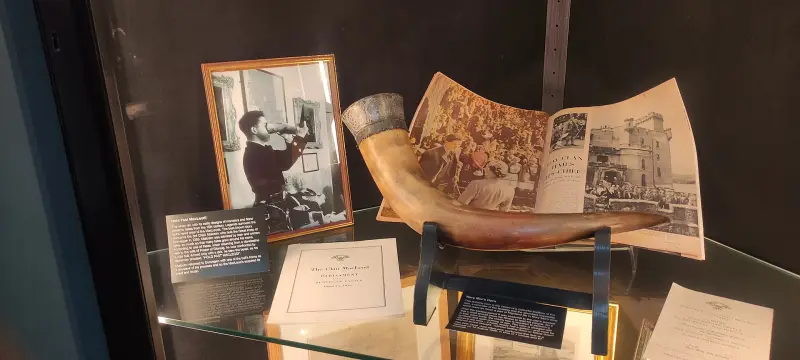
Here it is, this is a wine horn. The photo behind shows how they drank from it! Photography by Nissan Cohen
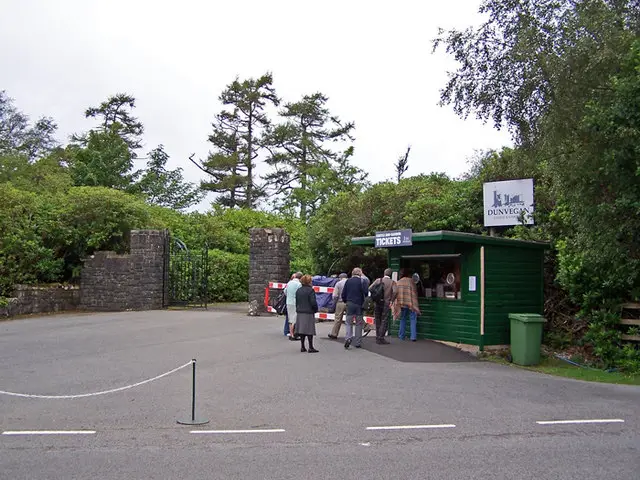
The queue at the ticket office at the gate to the castle. Photography by Richard Dorrell
Another souvenir is an ancient horn from which clan members drank wine. The bagpipes of the McCrimmons, the clan's permanent pipers, are also kept in the castle. This bagpipe was accompanied by a silver pipe, which the fairy queen also gave to the owners of the castle, but which they later lost. The pipe was lost, but the bagpipes remained, and now the castle also hosts an annual festival of the best bagpipers in Scotland!
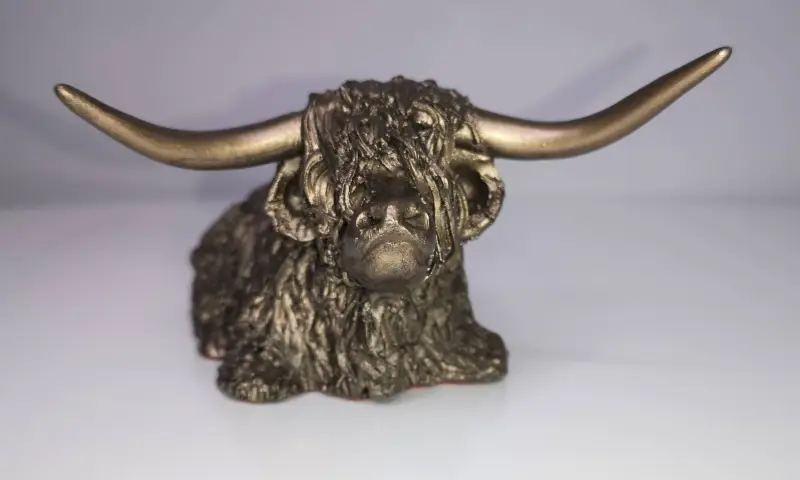
Well, this is a souvenir from the shop that sells them in the castle. Bronze cow of local breed. Long-horned and furry! They also sell knitted mittens and hats made from the wool of local sheep, traditional mugs with views of the castle and a lot of unnecessary but memorable things! Photo from Donegan Castle website
Information